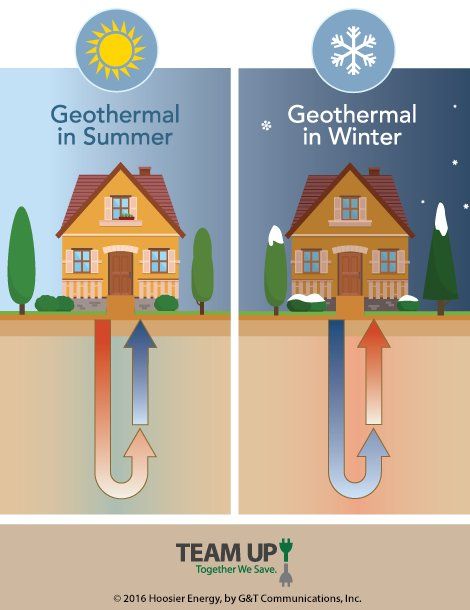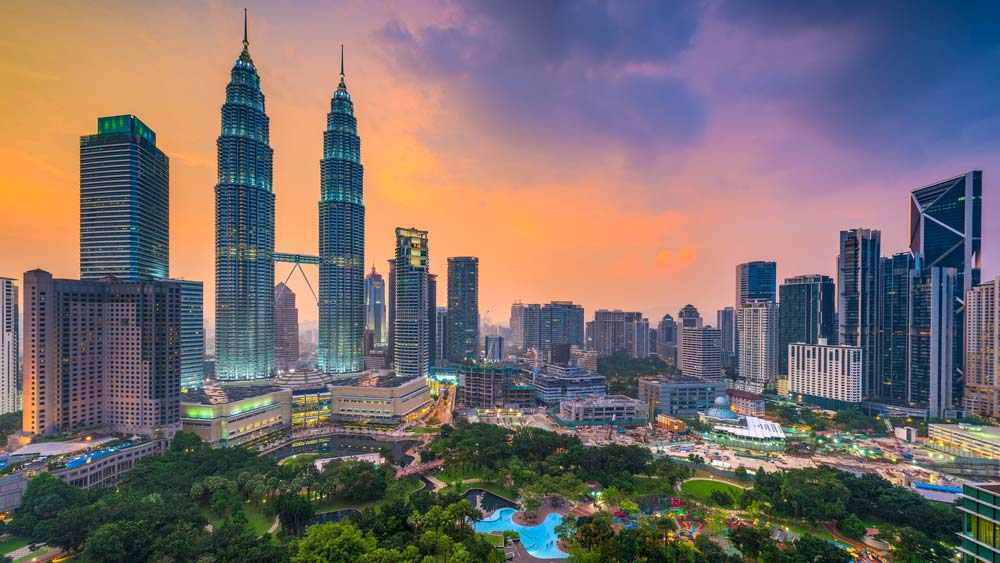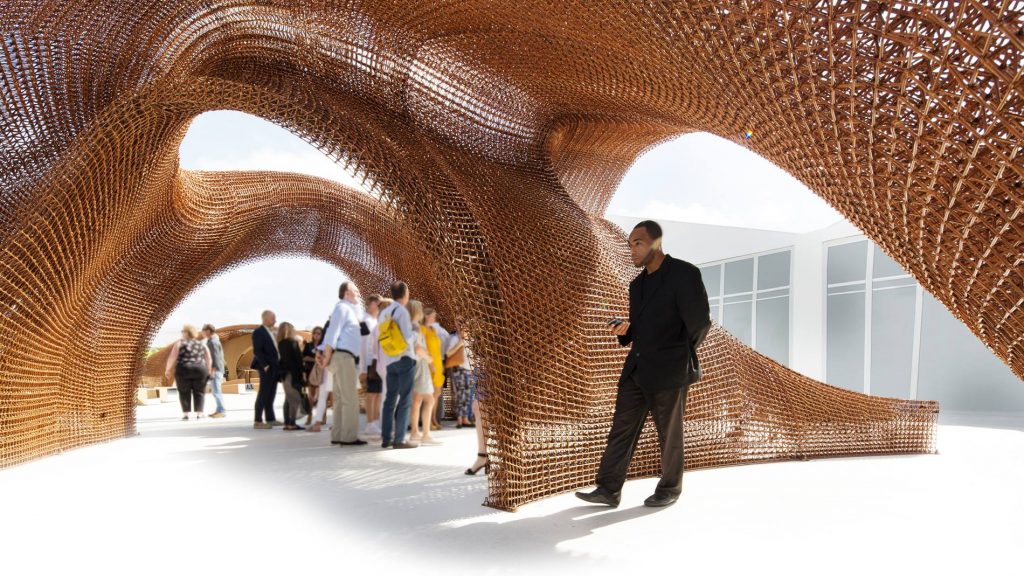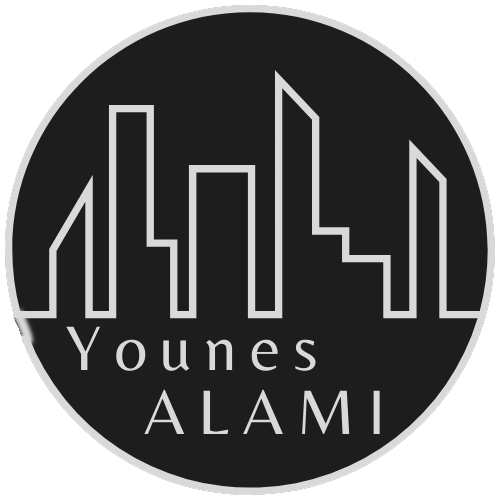The real question is how architecture as a discipline can adapt to the global crisis of the future, we have to rethink and redefine architecture for a futureless world.
According to social theorists such as Marc Augé or Franco Bifo Berardi, we live in an age characterized by the collapse of the very idea of the future (no more science fiction inspired cities ≠ future): in the last decades of the 20th century, with the repeated economic crisis, the discouraging Reports to the Club of Rome, and the seemingly definite collapse of the socialist project, our believe in the future was irreparably shattered. Taking into account that in its conventional sense architectural projects are always a project of the future, the described situation must have had profound consequences for architecture as a discipline. This is why any reflection on future architecture should start from an analysis of the spontaneous architectural responses to the implosion of the future in contemporary society.
WHAT WILL BE THE FUTURE OF ENERGY THAT AWAITS US IN THE COMING YEARS?
Great changes are coming in the energy sector in the next few years, and more so if we talk about the renewable energy sector. The decrease in the cost of production of this type of energy will encourage its use for both private consumers and companies. The main reason for the big change in power generation is probably not due to a climate agreement, future national policies or possible turbulence in coal prices. The change will actually come down to the more powerful word «money» and its intention to multiply it in a forceful way based on economic benefits that fossil fuel will not be able to generate.
The renewable energy that we will use the most soon is solar energy, obtained from the electromagnetic radiation of the Sun. Solar energy has become popular as one of the easiest renewable energies to produce and has democratized the access to green energy sources.

Another type of renewable energy that will begin to take greater prominence is geothermal energy. Geothermal energy is that energy in the form of heat located under the solid surface of the earth.

Through the different systems of capture, heat is exchanged with the land. Very low temperature geothermal energy is constantly regenerated by the effect of the sun, rain and the earth’s internal heat, making it one of the most efficient renewable energies, which can be used anywhere on the planet, 24 hours a day, 365 days a year.
GREEN SPACES AS A PRIORITY
One of the most predominant issues of social concern during the last few decades, has been climate change and the fact that not enough measures are being taken to avoid it. Part of these measures should come from urban design. That is why we predict the maximization of green space in every area, no matter how urban or populated.
We all know that the more surface of vegetation for the absorption of co2, the better. So, given the constant wildfires and deforestation, there is, and will continue to be a need to recover this surface.
In the 1960s a concept known as «Green Roofs» was developed in Germany. A green roof places a small ecosystem on a site that works in benefit for nature dominance, and for ours. At this point in time many projects worldwide have implemented this concept, but they are clearly not enough. With every new development of the Green Roof concept, we come closer to reaching a point where it will become a priority regulated by law for a project to include a minimum amount of natural environment built on its surfaces. This can apply to projects that are to be built, or even to buildings and sites that have been built in the past, by means of remodeling.

CIRCULAR ECONOMY: THE FUTURE OF THE ARCHITECTURAL PRODUCTION
Circular economy is a production and consuming model that implies sharing, renting, reusing, repairing, renovating and recycling materials and products that already exist as many times as possible to create an added value. This way, the circle of life of the products is longer.
The European Union has already started a plan to start converting our economy into a more circular economy, not only for the wellness of our environment but also for the citizens. Currently, the CEAP (Circular Economy Action Plan) is focussed on making sustainable products based on the EU, empowering local consumers and buyers to make circularity for people, regions and cities and focusing on the sectors that use most resources to ensure less waste.
In Architecture, there is a lack of recycling, running from developers, to buildings, to users. Whether this be due to a lack of information or simply lack of interest, buildings constructed after the crisis continue to disregard the detachable, extendable and reusable criteria recommended by the European Union. This criteria means in construction buildings that can have evolving uses where materials can be reused. “The ideal scenario would be to construct modular, detachable buildings that are economic and efficient, and able to be extended or have other uses in the future” says Jordi Bolea.
Also after construction, when the building has exhausted all its possible functions, there begins another process linked to waste management: demolition. Instead of demolishing the previous buildings, us as architects should think of ways of trying to reuse the previous structures, or some of the materials of the building and not go straight into building new things from scratch.
Adopting the Circular Economy is an urgent issue for architecture. We need to manufacture materials that can be reused, design buildings that can have a second life and implement demolition practices in line with the sustainability standards set by the European Union.
Example: White Arkitekter + ReGen Villages Create First Circular, Self-Sufficient Communities for Sweden.
White Arkitekter, in collaboration with Silicon Valley-based ReGen Villages, have joined forces to create fully circular, self-sufficient and resilient communities in Sweden. Inspired by computer games, the project puts in place organic food production, locally produced and stored energy, comprehensive recycling, and climate positive buildings.
NEW MATERIALS EMBRACING SUSTAINABILITY
The process of incorporating these and other new materials is not as straightforward as we would like. Every country, every company, and every project is different, with its own set of rules, protocols and requirements. It will take time, but innovations in construction are constantly being pushed forward by the invention of incredible new materials like this, as well as innovative architecture designs and concepts that place their focus on a cleaner, safer, more sustainable future for the industry.
- Pollution absorbing bricks
With the threat of climate change ever-present, future architects will constantly be forced to consider the carbon footprint of their structures. How better to reduce a structure’s contribution towards climate change than by building from pollution-absorbing bricks.
The Breathe Brick was developed by Carmen Trudell, assistant professor at Cal Poly college of architecture and environmental design, and actively pulls pollutants in from the air and releases filtered air. Designed to be part of a building’s ventilation system.
In the center is a cyclone filtration system that separates out the heavy air particles from the air and collects them in a removable hopper.
It basically functions as a vacuum and can be incorporated into a wall with a window or as part of a cooling system, meaning that it can easily be integrated into current construction.
- Cooling bricks
Another innovative materials that take the form of bricks are those created by students at the Institute of Advanced Architecture of Catalonia. A combination of clay and hydrogel creates a cooling effect on building interiors that are constructed from Hydroceramics.
The hydrogel in cooling bricks is able to absorb water – up to 500 times its weight – which is then released to reduce the temperature of surfaces and structures on especially hot days. Early testing has revealed that Hydroceramics are able to reduce temperatures within a building by as much as 6 degrees celsius.
Hydroceramics can easily and effectively be integrated into the cooling systems of current building structures, and could revolutionise construction in warmer climates. In fact, with further progress and development, they have the potential to make household air conditioners obsolete.
- Photovoltaic Ventilated Facade
This type of ecological coating, in addition to having an aesthetic value, is unbeatable in terms of thermal and acoustic insulation, it produces clean and free electricity thanks to the sun.
It has great environmental and sustainable benefits due to the great savings in air conditioning systems and the avoidance of the greenhouse effect of glass buildings
- Translucent wood
This innovative material was developed at Stockholm’s KTH Royal Institute of Technology where Professor Lars Berglund claims that translucent wood could be used as a low-cost, readily available, renewable resource for construction.
Ideally used to create windows and solar panels, translucent wood is created by first removing the lining in the wood veneer. The wood is then put through nanoscale tailoring which creates the translucent effect.
Translucent wood has the potential to be mass produced, offering a low-cost commercial resource.
- Rammed earth
It can be understood as clay-based concrete, as opposed to cement-based concrete. Much use has been made of the rammed earth or compressed earth technique. It consists of using a formwork – made of wood for example – as a mold, into which moist earth is poured and tamped down. The formwork is removed once it is filled with earth (and fully tamped), leaving the compressed earth wall in view.
- Self healing concrete
Dutch civil engineer, Dr. Schlangen of Delft University created plans for a self-healing concrete. The process involves exposing the concrete to heat in order to cause the material to melt and reform as it cools down.
While there are significant benefits to a self-healing concrete, its effectiveness would be limited by the ability to apply heat to it. Dr Schlangen proposed a vehicle that passes induction coils onto roads built from his self-healing concrete as a way to overcome this limitation, potentially saving the country approximately $90 million a year.
A similar alternative, created by Microbiologist Hendrick Jonkers is a self-regenerative bioconcrete. Infused with bacteria, bioconcrete is able to fill any cracks made in its structure with limestone, effectively enabling it to heal itself. Bacillus bacteria, a strain that thrives in alkaline conditions such as concrete, would be placed in biodegradable capsules, as would calcium lactate, the bacteria’s food source. When the concrete cracks, water enters the capsules and splits them open, allowing the bacteria to feed on the lactate and begin to form the limestone that heals the crack.
- Wood
Wood construction from sustainably managed forests offers us a rapidly renewable alternative, with low energy consumption and lower emissions than traditional construction materials.
- Exterior Wall Deck
The deck is a 100% sustainable material resistant to UV rays and very versatile to decorate the exterior cladding of your home. It also repels moisture, becoming a highly durable material.
The deck offers a touch of freshness, elegance and avant-garde for any outdoor space you want.
- Dekton
Dekton is presented as a resistant, versatile surface with a wide range of colors that will give an aesthetic response but will also fit in all the sustainability and energy efficiency challenges that we face.
Dekton uses the exclusive TSP technology, a technological process that accelerates the metamorphic changes that natural stone undergoes when exposed to high pressure and high temperatures for millennia. This, as we will see, makes the material have technical advantages that other materials cannot offer. The properties that make Dekton a unique material. Among the advantages of Dekton for facades, we find that this ultra-compact surface is highly resistant to ultraviolet rays, so the color will not be altered or degraded over time, something that does happen with other materials for facades. In addition, it has a higher flexural strength than other materials such as ceramic or pressed ceramic, something that also gives it a longer useful life. If we add to this that it is a material with a high resistance to scratching, we are faced with a perfect material in floors with high traffic and exposed areas in the lower parts of the facade. Dekton is more resistant to abrasion than ceramic. In this way, in addition to being used in private homes or neighborhood communities, Dekton can be an alternative in commercial buildings and high traffic areas. Likewise, it is good to note that it also has high resistance to freeze / thaw cycles, which in certain cold areas of the geography can be essential. This is due to the low porosity and low thermal expansion of the material. Yes, they are pieces with practically zero porosity that, in addition, does not require sealing at any time, neither at the beginning nor as maintenance. It is, therefore, capable of repelling liquids and gases that will not penetrate. material very resistant to heat and fire. It has the best rating in this regard, A1. This results in a material that will not be affected by sudden changes in temperature. It should be added that the geometric characteristics of Dekton also have great dimensional stability. This means that its values for flatness, thickness and straightness on both sides greatly facilitate the installation of the parts. Finally, remember that Dekton is specially designed to withstand environments with high humidity without having any fear of saltpeter, as it does not deteriorate it at all.
- Linen
It comes from a plant (Linum usitatissimum) of easy cultivation and low impact, obtaining recyclable fibers that are used as insulation or for the manufacture of textiles. They also offer good mechanical resistance without additional treatments, which makes them dimensionally stable.
- Natural rock
One of the most used resources, as it is a durable, resistant material and requires minimal maintenance (among other advantages, such as being non-resistant and its excellent thermal inertia). At the landscape level, we can achieve that a stone house is fully integrated with the environment, and offers many aesthetic options according to textures and colors. For its application in construction you do not need chemical processes, furnaces or cooling tanks. As long as we respect its origins, it complies with the famous rule of the three Rs: reuse, recycle and reduce.
- Seaweed skins
It consists of glass elements impregnated with water, in which microalgae are raised to generate energy, control light and shade the building. The algae are used as biomass and the heat they generate is used to heat the water in the tanks. Progress with microalgae continues, since they are a fundamental pillar to contribute to the energy sustainability of cities.
- Cork
It is the most widely accepted ecological insulation material for effectively fulfilling the function of insulation, it is recyclable and renewable and is generally used in the form of pressed cork panels. It has unique qualities such as impermeability, being almost impervious to liquids and gases, and rot-proof in the presence of humidity, which makes it ideal for floors or basements.
- Cellulose
It is also considered an ecological insulating material, whose main use is due to its heat storage capacity and its acoustic insulation. It is composed of waste paper, being 92% recycled newsprint plus boric salts and other additives. It is a joint-free insulation, which forms a block of homogeneous mass and is applied blown in chambers, cladding or on slabs.
- Bamboo
Bamboo provides the spaces with thermal and acoustic insulation, protects it from rain and wind in winter and from high temperatures in summer. We normally opt for wood over bamboo, but we should rethink the situation, as it is stronger and more durable than oak (in fact, it is known as vegetable steel). One of its greatest advantages is that its collection does not cause deforestation of forests and, in addition, it absorbs 30% more CO2 than trees (since it processes carbon dioxide more efficiently). Compared to wood, it grows at the speed of light, so a rapidly renewable material. «There are species that can reach up to 20 meters in length and 0.20 m in diameter in less than 9 weeks» (Bioconstruction. How to create healthy, harmonious and ecological spaces).
Its cost as a raw material is low, but it requires specialized labor for its installation and application in the construction of buildings, which is usually difficult to find in areas where it is not grown.
- Power-generating glass
A major development in creating environmentally-friendly construction materials has been the innovation of photovoltaic glass. Building integrated photovoltaic (BIPV) glazing can help buildings generate their own electricity by essentially turning an entire building into one big solar panel.
Companies such as Onyx Solar and Polysolar have developed several types of photovoltaic glass, the two main ones being amorphous silicon glass and crystalline silicon glass.
Both types of photovoltaic glass generate clean energy, but are suitable for different conditions and placements on buildings. Amorphous silicon glass is the most similar to architectural glass, with some tinting and visible wiring. Approximately 30% of light is let in and it works best in diffuse light conditions or overcast lighting.
In contrast, crystalline silicon glass is capable of generating twice the amount of power and is better positioned in direct sunlight. This makes it an ideal choice for sun-facing structures as its dark photovoltaic squares prevent much light coming through.
This and many more are examples of materials that could be used in the future architecture, which will be led by sustainability.
TRENDS THAT WILL SHAPE THE FUTURE OF ARCHITECTURE
Over the last two decades, the construction industry has been subject to dramatic changes, paving the way for a future in which traditional spatial concepts are longer valid. Now, compost is being used for building materials, crowdfunding and collaborative design have become increasingly popular approaches to architectural projects, there is a focus on the importance of green infrastructure and energy efficiency, and the line between private and public space is becoming increasingly blurred.
SUSTAINABILITY:
Sustainable architecture holds the key to an environmentally positive future. Only by living more economically with our resources can we hope to protect our environment and climate.
The philosophy behind sustainable architecture is all about reducing waste. This not only means physical waste but minimising energy loss as well. By keeping the energy we consume within our buildings for as long as possible, we need less supply in the first place. Using less energy to keep us comfortable means that we can become environmentally responsible and more resource efficient, which are both vital to reducing the effects of climate change.
There are three overriding concerns when designing buildings with better considerations towards ecological impact. The first is the materials used for construction. The second concern is the energy efficiency of the building and the last factor to consider is the location of the building itself. The building might be energy efficient and use low impact construction technologies but this would not mean anything if the ecosystem suffers as a result of the building. A greater holistic approach to all of these design factors is becoming more prevalent in mainstream architecture.

EQUITY:
This is a term well used in sociology (understanding wel the society will take a huge part in the architecture of the future) this adjective acknowledges that at times the allocation of resources and entitlements may need to focus on particular groups, individuals or areas of concern in order to allow and encourage their full participation in departmental practices and decision-making.
COLLABORATION:
Architecture as we know it is likely to disappear and, in the future, the role of architects may be very different to how we recognize it today. Specialists in, for example, environmental science and social anthropology will become active team members in design studios, working on complex projects that require knowledge in different fields.
It is reasonable to expect that the emergence of specialists from various fields will eliminate many of the job profiles currently existing in the construction industry.
Experts say collaboration with system leaders is no longer a luxury, but a necessity for meeting complex structural needs.
VR AND IMMERSIVE ARCHITECTURE:
Imagine an artificial world that you can observe, walk through, reach out to touch objects and see everything around you respond in real time. This is immersive virtual reality and these spaces are created using a combination of computer graphics, wireless tracking technology, headsets, HD projectors, polarised glass and more, all working together to create interactive and real-life experiences.
“VR is a huge leap forward for projects in the conceptual stage. Clients can actually see the proposed designs as they are intended. It’s powerful”
Virtual reality technology has seen rapid developments in recent years and this is most apparent in the architectural, engineering and construction industry. Every design will soon be made using virtual reality providing an incredibly accurate sense of presence in a space that’s yet to be built.
BIG DATA AND SMART CITIES:
It is still a relatively new and unexplored concept and its potential for human analysis is already obvious. This makes it a perfect and integral part of the planning and creation of smart cities.
As populations grow and resources become scarcer, the efficient usage of these limited goods becomes more important. Smart cities are a key factor in the consumption of materials and resources. Built on and integrating with big data, the cities of the future are becoming a realization today.
With the growth of our population and the advent of ideas such as big data and the Internet of Things, the natural step cities will take is to become more interconnected. There are millions of sensors in place already, monitoring various things in metropolises. In the near future, these sensors will multiply until they can monitor everything from streetlights and trashcans to road conditions and energy consumption.
These smart cities will allow us to make more efficient use of our resources, lower our energy consumption, and build our cities to maximize efficiency. Big data is essential to understanding how people in cities move, how energy is used, how various aspects of infrastructure interact, and much more.
the integration of big data and interconnected technology, along with the increasing population, will lead to the necessary creation of smart cities. To continue providing people with safe, comfortable, and affordable places to live, cities must incorporate techniques and technologies to bring them into the future.
INTERNET OF SPACES:
The “sharing economy” has had the greatest impact on the housing and real estate market. Peer-to-peer online platforms, as well as shared workspaces are paving the way towards a future in which infrastructure is the dominant aspect of the built environment. Regarding residential architecture, the concepts of interconnectivity and smart design will redefine the way living spaces are created. Transformable spaces that adapt to the homeowner’s age, economic status and personal preference are well on their way to becoming mainstream.
PARAMETRIC ARCHITECTURE:
Parametric design is a generative design system, where adjusting the parameters will compute to create different types of outputs, and create forms and structures that would not have otherwise been possible.
Parametric architecture uses internally a geometric programming language that can be used directly by coding. Or you can design parametrically using a software extension of Rhino called Grasshopper and make the same operation visually with a User Interface. Grasshopper shows you the shape of the building, and gives you a way to define handles to control it.
It allows you to do some once impossible tasks when using traditional 3D modeling software. But moreover it changes the relationship we have with the finished building. We actually don’t build a building, but a shape that is controlled by a series of parameters or constraints. The computer and human imagination play together to design architecture. The second important point is that it moves architecture closer to programming language. As it is code behind the shape, everything we can make with code becomes possible: share the code, fork it, make libraries…
The limit of parametric architecture could be the construction itself: it may not be as flexible as what the software can produce.
URBANISTICAL PLANIFICATION:
Sustainable urbanism is defined as “walkable and transit-served urbanism integrated with high performance buildings and high-performance infrastructure” (Farr 2007). In current times a complex of uncertainties demands sustainable environments. Three uncertainties are distinguished. Firstly, the city needs to deal with uncertain developments, such as the impacts of climate change. Secondly, urban environments are the place where deliberate uncertainties, such as the generation of renewable energy and other sustainability transitions must find a place. The third form of uncertainty is the increased exposure of urban populations to the impacts of a spectrum of uncertain developments, climate impacts. This ‘Triple-U problem’ urges the design of urban areas to be sustainable. Sustainability has long been a part of urbanism, however, in completely different ways in different periods in history. When learning from the past, the analysis of sustainable urbanism in different periods brings key elements to the fore. Sustainable urbanism has evolved, but key characteristics of each period may and can still be used to design sustainable cities. Based on these characteristics two strategies, and a potential third one, are identified: to fix the future, to indulge the future, and to create anti-fragile urban environments. Where fixing the future implies the reparation of environmental qualities and closing environmental flows within the urban boundaries, indulging the future focuses on the creation of sufficient space to accommodate the possible spatial impacts of unprecedented events and change. Anti-fragility supports the city in raising its resilience under threat of uncertain impacts.
ARCHITECTURE ROBOTS AND 3D PRINTERS:
The way we make things has changed, but will change more drastically still. Robotics is coming to the construction industry. It won’t be long before we are assisting in designing to a construction process that involves assembly robots. Assisted robotics, in which a human and robot work together to direct the construction process, is also on the horizon.
“Robotic construction and 3D printing are the future” –Wolf D Prix
We’ve seen 3D printing of consumer items, but new algorithms can actually value engineering a structure, while solving the equation for structural resilience and material use. In architecture, we have seen parametric design tools assist in creating amazing structures. Now the use of large-scale 3D printers will help push the materiality of those structures. 3D-printed construction will greatly expand the limits of construction technologies.

BIM:
The BIM (Building Information Model) is based on several principles that can be implemented with relative independence:
·we design a project using an unique 3d model which is modified throughout the project’s life
·this 3d is not only volumetric surfaces, but has metadata attached like the material of the element and parametric modifiers like the height of a wall
·the 3d model can be stored in a multi-client database and stored in the cloud to be accessible at the same time by several people
·multi-user permissions on the model can be defined precisely to reflect team member responsibility on the project
·all construction elements are classified using standard categories, namely the IFC
libraries of construction products can be inserted in the model and even get actualisation if the product version changes.
HORIZONTAL CITIES:
The future of cities won’t be building vertically, but more widely opened spaces. An example of this can be the urbanization in Denmark:
They reserved an area to create a «city of gardens.» Specifically, they built huge circular gardens with a single path to access inside. From the center of these gardens there are radially projected portions delimited by tall hedges and with a house with its own garden in each of these portions. They are like mini-urbanizations or neighborhoods where all the neighbors can meet in the center of the garden, since they usually have their cars parked there, each one in front of its corresponding garden portion.
There are no noisy streets or street lights or parks. Just the tranquility of being in the middle of a perfectly green and trimmed field through which a single road passes from which other roads branch off that lead directly to each circular garden.
NO MORE ‘PUBLIC VS. PRIVATE’ SPACES:
An increasing number of buildings not only address the needs of its users by function but also aim to incorporate public and commercial amenities. Architects are becoming aware of the need for creating inclusive spaces that share the same palpable values as their neighborhoods and the general public.
With the emergence of new technologies, it has become possible to design large developments as micro-cities that offer a range of diverse services (think Google, Facebook and Linkedin headquarters). Private buildings often include recycling and composting facilities and other public domain functions.
Excess energy that has been generated by private residences, offices and other buildings is now often fed into the public power grid.
TEMPORARY ARCHITECTURE:
An architectural system rooted in principles of transience, re-use and flexibility may lessen the costs of waterfront redevelopment failure. As cities transition to a new economic era, designers must resist the temptation to redefine the city through formal means. This idea of temporary/ephemeral architecture proposes to confront the uncertain realities of the deindustrializing condition with an architectural methodology that affords experimentation, reversibility and reusability. It is once conditions begin to stabilize that a more permanent architecture may begin to emerge.
temporary architecture can be used to change the perception of residual sites. Temporary architecture has an opportunity to bring a large number of people to a site in a short period of time. Ephemeral suggests a more emotional connection to the temporary nature of architecture.
RECYCLING ARCHITECTURE:
Architectural recycling is the process of altering the existing building using all of its available, usable material to make it suitable for new functions. The concept of recycling implies the notion of change, unlike many other terms that correspond to the intervention on the existing building. Thus, the original building is altered to accommodate a new function. However, most of the original buildings’ materials are used, which offer a number of advantages, such as the increase of the working service life of existing buildings; profitability of the resources already applied; the absence of extraction, processing, and transport costs; and reduction of the need for manufacturing new components and products, which directly address the local economy and environment. Sustainable architectural design includes the principles for the design of sustainable buildings but is inadequate in developing sustainable design principles only for new projects. The existing buildings must also be considered given that structural issues are usually not the reason buildings come to their end-of-life, but rather the shift of the building’s original purpose, which makes the existing building unsuitable for new roles and functions.






